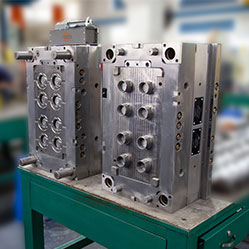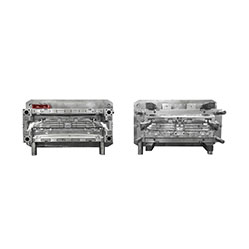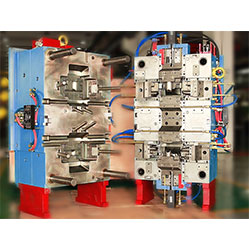Controling method of plastic injection mold temperature
Except for heat radiation and heat convection from the mold, most of the heat bring into the mold by the plastic needs to be taken out of the mold by the circulating heat transfer medium by heat conduction. Heat transfer media include water, oil and beryllium copper, etc, sometimes aluminum alloys are also used.
The mold temperature is generally controlled by adjusting the temperature of the heat transfer medium and adding heat insulation boards and heating rods.
Lower mold temperature is generally achieved by passing warm water (about 25°C) to cavity and "frozen water" (about 4°C) to core, when the gate of the heat transfer medium, that is the cooling water gate cannot pass through certain parts, materials with higher heat transfer efficiency (such as beryllium copper, etc.) should be used to transfer the heat to the heat transfer medium.
To increase the mold temperature, it is generally achieved by passing hot water and oil into the cooling water gate, when the mold temperature is high, we can use an electric heating rod to heat it, for molds that need to be heated, in order to prevent heat loss due to heat conduction, a resin insulation board should be added to the mold panel.

In the hot runner mold, the temperature of the runner plate is required to be high, and it must be heated by a heating rod. In order to avoid the heat of the runner plate from being transferred to the cavity, which causes difficulty in cooling the cavity, the contact surface with the cavity should be minimized during design and use heat insulation sheet to insulate.
In many cases, injection molds need to be cooled, and the main way of cooling is to process cooling water gates in the mold, the main forms of cooling water channels are: straight-through water gates, circular water gates, heat-conducting water gates, diaphragm water gatesls, spiral water gatess and jet water gates. most molds are cooled by straight-through water gate in actual design, when the plastic parts shape is special, they are mostly cooled by a combination of straight-through water gates and other cooling water gates.
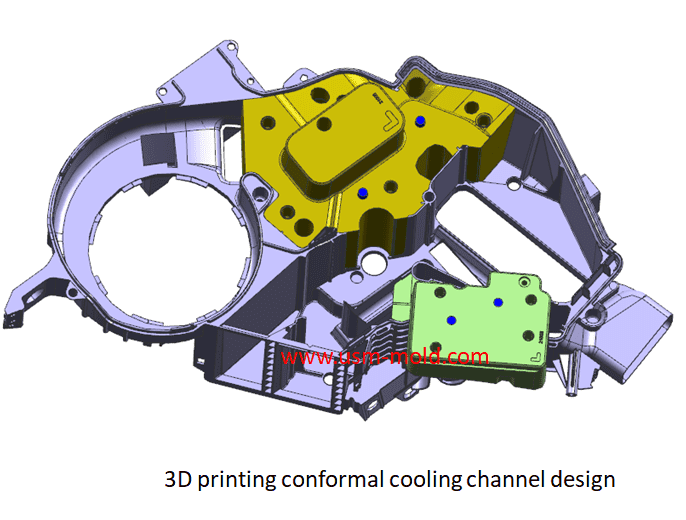
Factors should be considered when designing a temperature control system:
1. The wall thickness, projected area and structural shape of the molded plastic part;
2. Production batch of plastic parts;
3. The property of molded plastics;
4. The size and structure of the mold, and the insert parts;
5. The gate type and hot runner layout.

Venting of parting surface
Mar 7, 2022The exhaust slot on the parting surface is easy to clean and processing, also not easy to be blocked, and has a good exhaust effect, it is the main area where the gas is exhausted, so the exhaust from...view
Slider angle designing tips
Dec 4, 20231. Normally, all the insertion slopes of the slider are not allowed to be less than 3° to prevent excessive self-locking force and scratched; 2. The angle of the locking surface must be bigger than...view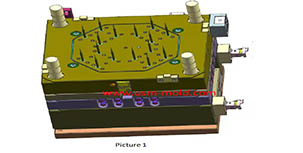
Design Tips of Vacuum Venting Mold
Mar 30, 2022There are some regular venting way which are parting surface venting, insert venting, insert pin venting and well-ventilated steel, but there is a special way is vacumm venting, it will need vacumm...view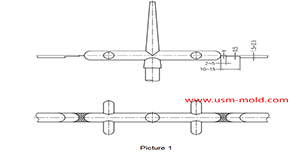
Parting surface venting of runner system
Mar 10, 2022There are a large amount of gas in the main and sub channel, these gas are discharged through the pull rod (push rod) during injection processing, a part of gas come out from exhaust slot on parting...view
Gas-assisted injection molding product defects and solutions
Apr 28, 2022Common defects and solutions of gas-assisted injection moulding: 1. Gas blows out the melt like in picture 1. Reason: insufficient pre-filled amount. When the plastic part is a locally thickened...view
The sub gate of the plastic injection mold runner system
Jan 26, 2022In order to get the best injection quality, the gate type must be selected carefully, the coommon gate tyeps are: direct gate, side gate, pin-point gate, sub gate,valve gate of hot runner etc. Among...view
 English
English русский
русский

